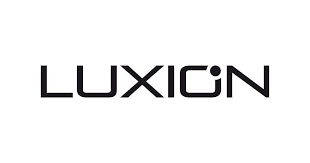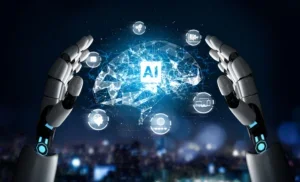The Pillars of Modern Power
In the 21st century, the nature of power is evolving at an unprecedented rate. Traditionally, power has been synonymous with military might and economic supremacy, but modern power dynamics reflect a more nuanced and interconnected world. As nations, corporations, and even individuals navigate this landscape, they rely on several key pillars to assert influence, build resilience, and shape outcomes.
Today, the primary pillars of modern power are technology, information, economic strength, and environmental sustainability. Each of these factors contributes to a multi-dimensional power structure, with countries and organizations leveraging them to stay competitive on the global stage. Let’s explore each of these pillars in detail to understand how they contribute to modern power and influence.
1. Technological Innovation: The Driving Force of Modern Power
Technology is arguably the most transformative pillar of modern power. From the early days of industrialization to today’s digital revolution, technological advancements have fundamentally reshaped societies and economies. In the digital age, the development of cutting-edge technologies such as artificial intelligence (AI), quantum computing, and biotechnology has become a crucial determinant of power.
Nations that lead in technology often have a strategic advantage in global affairs. For instance, AI has significant implications for national security, healthcare, and even education. Countries at the forefront of AI research, like the United States and China, are not only able to streamline industries but also to harness data for governance and control.
Similarly, the advent of 5G technology represents a new battleground in modern geopolitics. Countries that control 5G infrastructure have the capability to influence the global flow of information, manage extensive data networks, and secure financial advantages. This technology is also key to the development of smart cities and the Internet of Things (IoT), promising to redefine urban living and global connectivity.
Beyond nations, corporations play a pivotal role in technological power. Tech giants like Google, Amazon, and Microsoft wield influence that rivals many governments. Their advancements and control over digital infrastructure impact everything from how we communicate to how we access information. These corporations are often at the forefront of AI, cloud computing, and data management, positioning them as critical players in the power dynamics of the digital world.
2. Information Control: Power in the Age of Knowledge
In a world where access to information is instantaneous, information control has become one of the most powerful tools available. Information shapes public perception, sways political decisions, and even influences economic markets. The rise of the internet and social media has enabled unprecedented access to information, but it has also made it easier to spread misinformation and propaganda.
Countries and corporations that can effectively control information are able to exert significant influence. For instance, social media platforms like Facebook, Twitter, and TikTok have become essential avenues for disseminating information and molding public opinion. Governments, too, are aware of the power of information control. Some invest heavily in cyber capabilities to influence foreign publics or to safeguard their populations from perceived foreign interference.
The control and manipulation of information are not confined to governments alone; non-state actors also play a role. Hackers, advocacy groups, and international organizations leverage information to shape agendas and push narratives. In recent years, information warfare has become a crucial component of conflicts, with entities using cyber-attacks and misinformation campaigns to weaken adversaries and sow discord.
3. Economic Strength: The Bedrock of National and Global Influence
Economic strength has long been a pillar of power, and this remains true in the modern world. However, the dynamics of economic power have evolved, emphasizing not only GDP but also economic resilience, innovation, and global connectivity.
Economic powerhouses like the United States, China, and the European Union are influential not only because of their financial resources but also because of their ability to shape global markets, control trade routes, and influence international monetary policies. Countries with diversified economies and robust trade networks often have more significant leverage in global affairs, allowing them to dictate terms in international negotiations and to weather global economic shifts.
Trade alliances and financial influence are significant as well. Organizations like the World Trade Organization (WTO), the International Monetary Fund (IMF), and the World Bank serve as avenues for economic influence. Additionally, multilateral trade agreements such as the North American Free Trade Agreement (NAFTA) and the Comprehensive and Progressive Agreement for Trans-Pacific Partnership (CPTPP) create economic blocs that amplify collective power.
Meanwhile, corporations wield economic power through their global reach and capital reserves. Multinational corporations (MNCs) like Apple, ExxonMobil, and Toyota have financial resources exceeding the GDPs of some countries, enabling them to lobby governments, shape policy, and make strategic investments that reinforce their market dominance. Their influence extends beyond economics, impacting social and political landscapes as well.
4. Environmental Sustainability: The New Frontier of Global Power
As climate change poses unprecedented challenges, environmental sustainability has emerged as a fundamental pillar of modern power. Nations and corporations are increasingly judged on their environmental policies and their commitment to sustainability, as climate issues transcend borders and affect everyone.
Countries that lead in sustainable practices, renewable energy, and environmental innovation are setting a new standard for power. The transition to renewable energy, such as solar, wind, and hydropower, is one way in which nations can reduce their reliance on fossil fuels and assert environmental leadership. For example, countries in the European Union have set ambitious targets for carbon neutrality, using their environmental agenda to influence other nations and promote green policies on a global scale.
In addition, international treaties and organizations, such as the Paris Agreement and the United Nations Framework Convention on Climate Change (UNFCCC), represent collaborative efforts to address climate issues. These alliances enable countries to collectively leverage their environmental policies to impact global behavior and decision-making.
Corporations are also under growing pressure to prioritize sustainability. Those that lead in sustainable business practices not only gain competitive advantage but also earn public trust and credibility. Many companies are embracing ESG (Environmental, Social, and Governance) criteria, recognizing that sustainable practices can attract environmentally-conscious investors and consumers. By demonstrating environmental responsibility, companies are aligning themselves with a powerful global movement that prioritizes long-term resilience over short-term profit.
The Intersection of the Pillars: A Complex Balance
The pillars of modern power are not isolated; they intersect and reinforce each other. For example, a country that invests in green technology may gain both technological and environmental power, while a company that excels in sustainable innovation can enhance its economic and social influence. The dynamic interplay among technology, information, economic strength, and environmental sustainability reflects a shift towards multi-faceted power structures.
For individuals, corporations, and nations, understanding these pillars is essential for navigating today’s complex world. Leaders who can harness the power of technology, control information wisely, build economic resilience, and embrace sustainability are better positioned to thrive and lead in the modern era.
Conclusion: Embracing a New Era of Power
The pillars of modern power—technology, information control, economic strength, and environmental sustainability—define the global landscape today. While the balance of power may continue to shift, these four factors will remain essential as the world confronts challenges such as climate change, economic instability, and technological disruption.
In this interconnected era, those who recognize the influence of these pillars and adapt to their demands will shape the future. By understanding and engaging with each of these critical aspects, leaders and citizens alike can contribute to a world that is not only powerful but also more resilient, equitable, and sustainable.





Post Comment